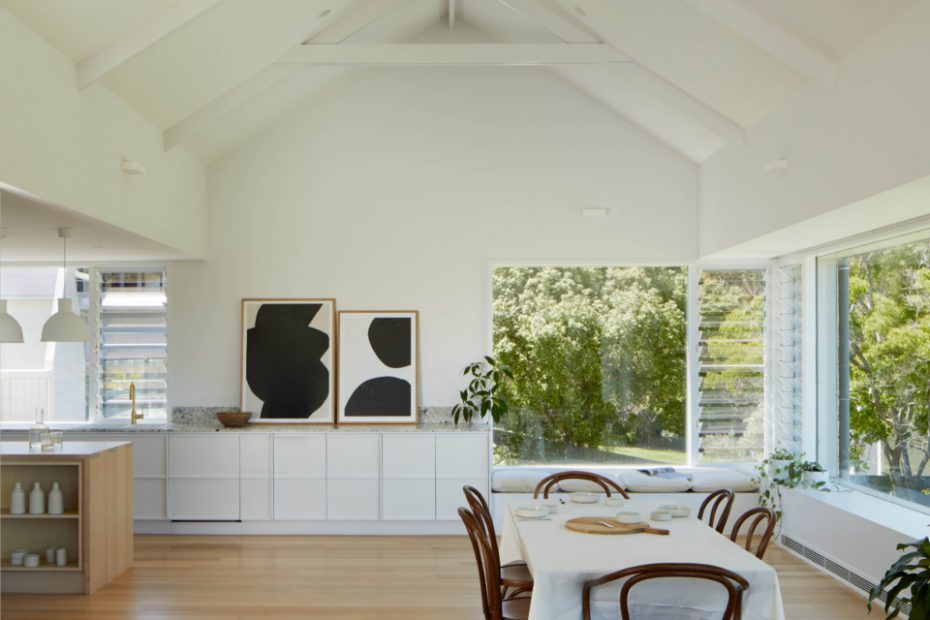A Scandi-Inspired Boathouse With Views Of Lake Macquarie, NSW
Architecture
Inside Speers Point House‘s living room.
The kitchen and living areas are located on the middle floor of the home.
The walk-in pantry. Ceramics by Henry & Tunks.
Wide windows and louvres provide cross-ventilation in all rooms. Unfold Pendant by Muuto.
A sunny window seat.
The gabled roof creates a grand sense of space inside. Thonet chairs.
‘I love the way that the living spaces are perched comfortably amongst the canopy of the trees,’ OVDA Studio founder Olivia van Dijk says.
A staircase connects to the main bedroom wing on the upper floor.
The colour palette was driven by the clients’ love of Scandinavian architecture.
The pared-back main bedroom. Cultiver bedding. Amp Pendant by Normann Copenhagen.
But the seemingly daring pathway is enclosed by green space below.
The family home stands out against the tree-lined backdrop.
After the site below their Speers Point property shifted dramatically, leaving their family home disconnected from the backyard, owners Sam and James enlisted the help of OVDA Studio to replace the old house with something they could call their ‘forever home’.
‘The home was built on several layers of poorly constructed concrete, supported by towering, rambling, home-made rock retaining walls that dropped steeply and precariously down to the boundary of the neighbouring property below,’ OVDA Studio founder Olivia van Dijk says.
The couple’s brief asked for a sustainable house that incorporated passive solar design wherever possible, and captured views across Lake Macquarie and the mountains beyond. And — unlike some of the other new builds nearby — they were happy for it to have a small footprint.
‘I wanted the design to be a departure from the prevalent McMansion style of housing that I observed in the area — a re-imaged architectural response to what homes could be in the Lake Macquarie surrounds,’ Olivia adds.
The resulting house is made up of two tall pavilions connected by a central deck. Working with the steepness of the hillside block, the three-level floorplan is built upwards into the slope, with unique features like an elevated entry bridge that leads to the front door on the top level.
The timber-clad structures were largely inspired by an old image of timber shacks dotted along Cockle Creek, Tasmania, that Olivia came across in her research.
‘People used to construct these simple and basic structures along the lakes’ edge – they were primarily used as weekend getaways or holiday homes,’ she says.
‘Families and friends often built shacks near each other, and the spaces in between became gathering places for socialising, barbecues, and shared recreational activities.’
Everything from the forms to the textural materials and the placement of the internal deck stands as a nod to these ‘humble shacks’ from the early-mid 20th century. The striking gable rooflines also provide optimal positioning for the solar panels that power the home’s all-electric appliances.
Olivia drew from the clients’ love of Scandinavian architecture to create a light, airy and calming interior palette, enhanced by the soaring ceilings and windows that wrap around the main bedroom wing on the top floor, and living spaces just below.
‘I love the way that the living spaces are perched comfortably amongst the canopy of the trees, like a bird’s nest, and how the house feels enveloped and protected by Munibung Hill to the east,’ Olivia adds.
In addition to appreciating the home’s indoor-outdoor connection in their day-to-day, Sam and James love to sit on the entry bridge with their two kids every Friday, for a family dinner of fish and chips. Living the dream!
